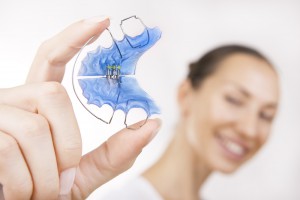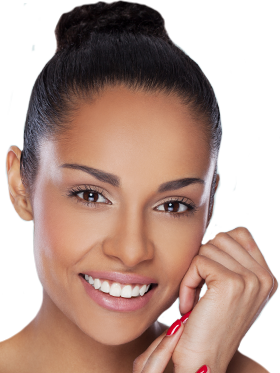 On our website and in our consultations, we often mention orthodontic appliances. An orthodontic appliance is any piece of equipment that is utilized to help bring your teeth, jaw, and oral structures into proper alignment. While our experienced orthodontist, Dr. Kenneth Banasiak, will handle anything to do with the brackets and wires of traditional metal braces, there are some pieces that you will have the opportunity to use yourself. To help you become more familiar with these items, we have provided a brief overview of some of the most common orthodontic appliances.
On our website and in our consultations, we often mention orthodontic appliances. An orthodontic appliance is any piece of equipment that is utilized to help bring your teeth, jaw, and oral structures into proper alignment. While our experienced orthodontist, Dr. Kenneth Banasiak, will handle anything to do with the brackets and wires of traditional metal braces, there are some pieces that you will have the opportunity to use yourself. To help you become more familiar with these items, we have provided a brief overview of some of the most common orthodontic appliances.
Follow the links below to learn more about each of the orthodontic appliances we might recommend for your treatment. If you would like additional information about any of them, or if you would like to speak to a member of our team, please contact us today.
Elastics
Elastics, sometimes called rubber bands, are occasionally prescribed to help improve how your upper and lower teeth fit together. Bite alignment is essential for ideal oral function. Rubber bands come in many colors to make them more fun, or you can select clear for greater discretion. For the best results, please consistently wear them as prescribed.
Herbst® Appliance
One of the advanced techniques we can use to address an overbite is the Herbst® Appliance. We don’t use headgear at our office. We believe there are more effective, innovative, and comfortable options available that can achieve a better outcome. Herbst® Appliance can shift the upper molars backwards while gradually moving the lower jaw forward. This method can be particularly effective in younger children who are still undergoing the growth process. In general, this device is worn for about 12-15 months, though your experience may vary.
Palatal Expander
If your upper jaw is narrower than your bottom jaw, a palatal expander can adjust the width of your palate so ideal alignment can be achieved. This device places gentle pressure on the upper molars to carefully space them wider apart. Once the jaw reaches the proper size, the expander should be worn for several more months to minimize the potential for additional movement.
Positioners
Typically the last step in your treatment, positioners, as the name suggests, help to position your teeth where they should remain for the life of your smile. In general, and with consistent use, the positioner should be worn for about four to eight weeks, depending on your unique needs and goals.
Retainers
There are two kinds of retainers: removable and fixed. They can be ordered in a wide range of colors and patterns to suit your tastes. Retainers are used to ensure that your teeth remain straight and in the newly acquired proper alignment. Without dependable use during this settling period, your teeth could potentially regress and return to their former position. Our orthodontist can tell you how long you will need to wear this appliance during your appointment.
Separators or Spacers
Appearing much like tiny rubber bagels, spacers, sometimes called separators, are used to temporarily hold your teeth apart so that orthodontic bands can eventually be placed there instead. In general the period between one appointment and the next is sufficient time for adequate space to be created. Try to avoid eating sticky, chewy foods when you have spacers in, and be careful not to displace them with toothpicks or floss.
There’s a lot to learn about orthodontic appliances, and we’re ready to help. Contact our office today for more information or to schedule a complimentary consultation with our skilled orthodontist.




 Basking Ridge
Basking Ridge
